Description: War Thunder is a next generation military MMO game dedicated to...

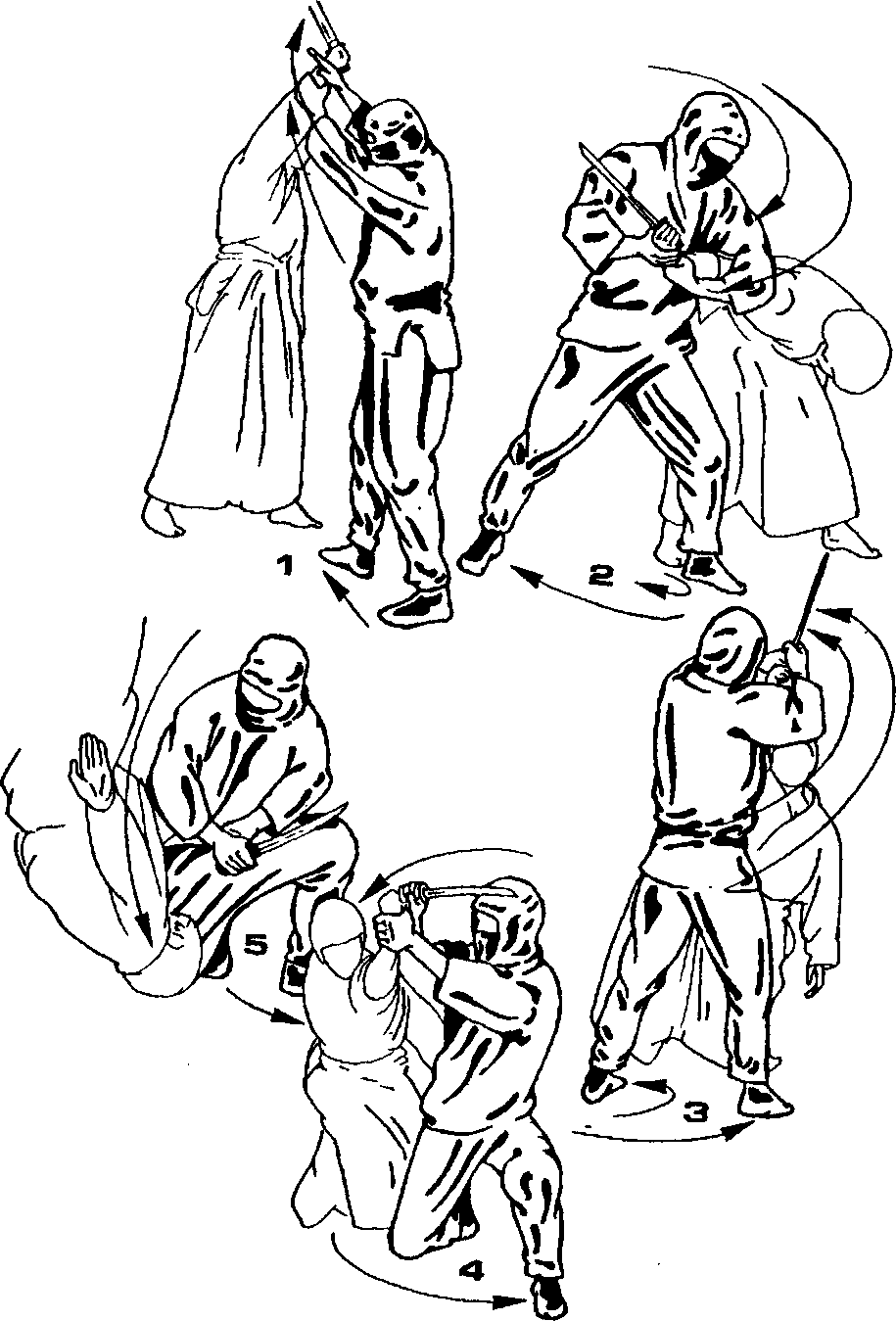
Conquer the situation, not the enemy. Direct duel with the enemy was by no means part of the intentions of a skilled agent. The enemy was eliminated if the interests of the case required it, and also when he clearly interfered with the plans of the ninja. A well-executed operation should not have left any compromising traces, except in those cases when attention was specifically focused on such traces in order to sow the desired thoughts and moods in the minds of enemies. The opponent was most often perceived only as an animated obstacle, but not as an object of action. To win is to fulfill the assigned task, and not to finish off the living obstacle that has arisen on the way.
Rationality. All actions of the scout were subject to one goal and had to be strictly rational. Why waste energy on a fight with the enemy when you can just blind him and slip away? Why sneak up on the sentry through the rustling grass, risking every second, if you can silently shoot at him with a poisonous needle from a blowpipe? Why get involved in a group fight when it is easier to send the pursuers on the wrong track? It was considered very reasonable to use special weapons and devices that made it possible to neutralize the enemy even before he came into direct contact with the infiltrator.
Except special means and ninja devices widely used any objects that came to hand. The ability to use improvised means greatly facilitates the implementation of many techniques: for example, strangulation with a stick is much faster and more effective than strangulation with the hands, and hitting with a stone is more powerful than hitting with an empty fist.
In combat conditions, all the possibilities of a well-trained body were realized - from striking to leaving a fettering grip through an acrobatic stunt. Every action taken must be instantaneous.
It is possible to follow from the foregoing. Capture is absolutely unacceptable if you have not yet decided what you will do in the future. Receptions are performed only to the extent that it corresponds to the desired result. No more, no less. If one is reached at the very beginning. reception, it is pointless to continue.
Surprise. Since the ninja usually faced professionals with excellent weapons skills (sword, spear, etc.), victory had to be obtained by unconventional tactics, mixed with surprise and putting the enemy in an unusual combat situation for him. The most common stunning actions were the surprise and suddenness of the attack, closely related to the invisibility or lulling of the enemy's vigilance by their appearance and behavior; unpredictable changes ("breaking") of the distance; instant shutdowns (blindness, stunning) or deception (false noise) of the senses; using standard weapons in an unusual manner and using weapons unfamiliar to the enemy (such as spiked gloves).
Use of the environment. Thanks to getting used to the theory of the five elements, which we talked about earlier, the scout became a natural part of the environment, and therefore could use it as his own body. This included, for example, periodic disappearances during the battle on the ground, and taking advantage of the features of the battlefield (height difference, type of surface), and using the details of the situation as a weapon or a barrier between oneself and the enemy. Relying on weather conditions, it was possible to substitute the enemy with his face to the blinding sun, to adjust the decisive technique by the time the moon set behind a cloud, to lure the enemy into the rain on a slippery surface.
Binding the manner of combat to the characteristics of the enemy. In the event of a direct collision, the scout was confronted by a wide variety of opponents, each of whom had his own level of skill, personal life attitudes.
Ki, their strengths and weak sides. It was possible to assess the capabilities and vulnerabilities of the enemy by many factors. By appearance, involuntary movements and face, it was determined which points of the fighter’s body were most vulnerable, by physique it was assumed in which combat techniques the enemy was undoubtedly dangerous, and by the manner of movement his place in the system of primary elements (elements) was recognized, on the basis of which his own version of the duel was chosen. The transition to one or another type of “combat of the elements” had to occur reflexively, as a reaction to a subconscious assessment of the enemy and external conditions (for example, a fight in a narrow space was not very suitable for the wind style, and a meeting with a timid fighter clearly corresponded to the style of fire). The creation of the necessary reflexes was facilitated by the strict discipline of the training fight, fixed in a sleepy state, followed by a conscious rejection of any restrictive rules.
Anonymity. In any of his actions, the ninja had to remain unrecognized. Identifying him could jeopardize contactees and decipher the clan's past and future actions. In combat conditions, such anonymity was ensured by work in invisibility and a specific hood mask, leaving only the eyes open. Improvising, for this you can use a scarf or some kind of stretchable fabric tube (stocking, piece of sweater). Difficulty identifying the mask, in addition, eliminates the unmasking reflection of the skin of the face and muffles the noise of breathing.
Today, quite legal black glasses can also provide a certain unrecognizability, which, in addition, save from machinations with a powder or liquid dazzler, do not allow the enemy to detect the direction of the fighter’s gaze, make it difficult to read the thought expressed in his eyes, or, by narrowing the pupils, to predict the beginning of a decisive attacks.

In the Middle Ages, ninja used special masks and fire tricks, acting as demons (onibi-no-jutsu), frightening superstitious enemies.
Invisibility and silence. characteristic feature The infiltrator's combat was his desire to remain invisible while attacking or defending. It's hard to fight someone you can't see; Moreover, the feeling that at any moment you can be attacked in some unknown way and from where, puts pressure on the psyche and unbalances. Most invisibility tricks were based on two fundamental directions: physical and mental. The first meant that the fighter is located outside the field of view of the enemy; the second is that the ninja is physically in front of the eyes of the enemy, but the consciousness of the latter simply does not perceive him. The second type includes camouflage and imitation invisibility, as well as its complicated - suggestible and bewitching - options.
Physical invisibility also has several modifications. Firstly, you can constantly slip out of the enemy's field of vision, using advanced movements or neighboring objects for this. Secondly, to operate in an environment where the sensitivity of the enemy's vision is significantly reduced (at night, in pre-dawn fog, in a smoke screen). And, finally, you can simply turn off the vision of the enemy by throwing a corrosive powder into his face, blinding him at night with a bright fire flash, poking his fingers in his eyes or clicking up on the tip of his nose.
A characteristic tactic of a scout who finds himself in the enemy's field of vision is the desire to disappear from his field of vision. Using the features of the environment and terrain, this can be done, for example, by an unexpected departure (sometimes with a crouch) to the ground, a sharp grouping (reduction of the frontal plane of the pose) followed by a roll to the side or an instant pass behind the back, combined with a short distraction of the enemy’s attention in another direction .
In some cases, instead of going behind the opponent's back, he himself is turned with his back to himself, using, for example, such well-known techniques as twisting his head with his hands or turning his torso with a shoulder grip. Avoiding the visual control of the enemy makes your further actions for him dangerous and unpredictable. Now you can easily perform a choke hold that disables a blow to the kidney or spine, or, using a pinning hold, use the enemy as a handy item when defending against several attackers
Silence is an integral part of invisibility. Silent movements ensure the surprise of the attack, and hence the speed of neutralizing the enemy. In a battle with limited vision (at night, when blinded), the enemy is mainly guided by hearing, and the complete silence of what is happening (or disorienting deceptive noises) causes mental stress and makes him a toy in the hands of the attacker.
Noiselessness of movements is achieved through constant training that has become a daily routine. First of all, it is necessary to identify and exclude “own” noises, the noise of untrained breathing, shuffling of the legs when walking, knocking of the body when falling, etc. When performing combat movements, one should analyze and realize why they produce noise, and then try to neutralize these reasons.
Another source of noise is ill-fitting uniforms, shoes, jingling metal objects in clothing, etc.
When maneuvering in combat space, one should not step on rustling or brittle objects, touch unstable structures, or hit stationary objects. Dexterity and prudence, trained memory for the situation, masking possible clumsiness with extraneous noise save from such troubles.
A very dangerous source of noise for a ninja is a person who has discovered it and is trying to raise the alarm. To prevent this, a dubious enemy is usually sharply
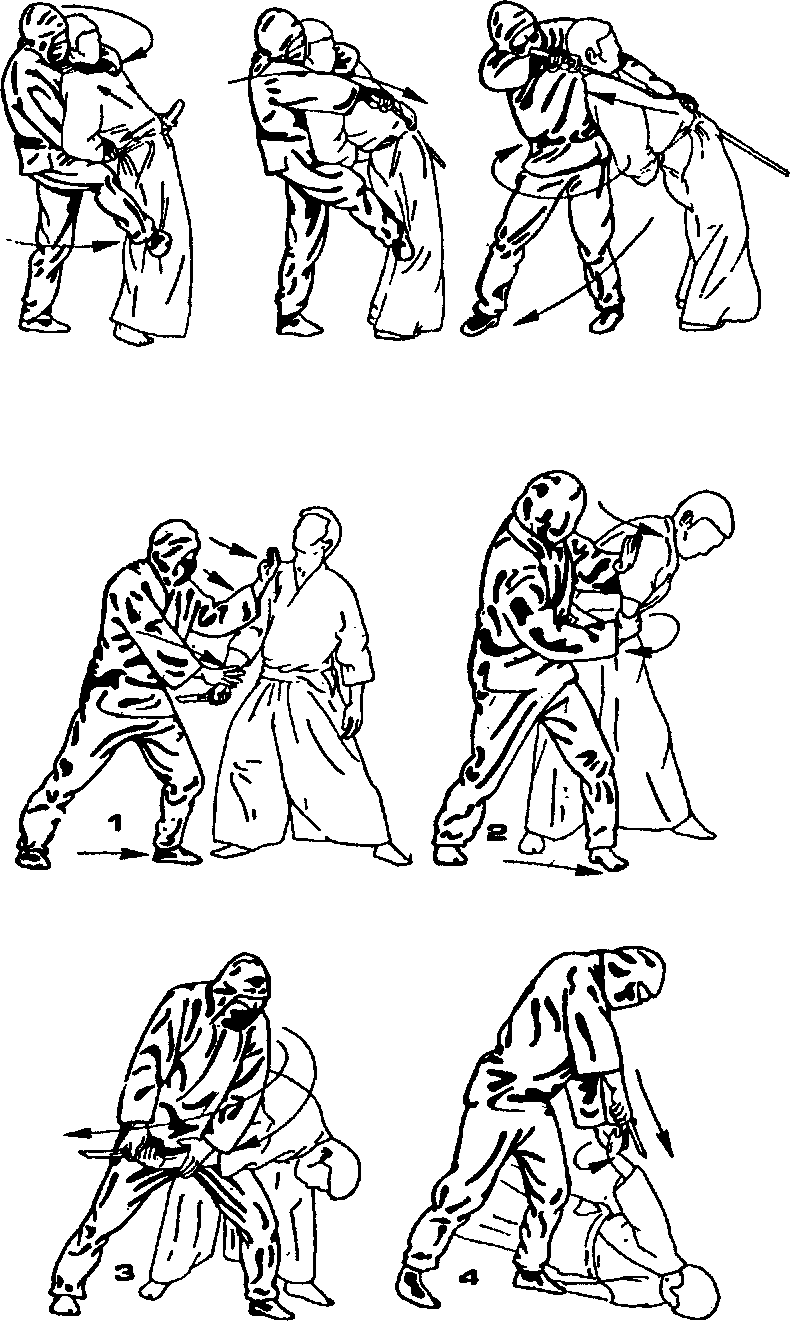
Bend back the head and strike with the edge of the palm of the hand on the throat.
Preparing for hand-to-hand combat. There are two main ways to prepare for hand-to-hand combat, fundamentally different from each other. The first of them is based on the selection of a certain set of techniques, the most in the best way corresponding to the possibilities this person. Then the possession of these techniques is brought to the level of mastery. In this case, the situations that arise in battle are adjusted to the chosen techniques. This is a way of formalizing technology, reducing it to certain patterns. Its concentrated expression is the complexes of standard technical actions, known under the names "kata", "taolu".
And there is a second way, based on the spontaneous movements of the body, automatically responding to any situation that arises. This is a way of improvisation. It is based on the idea that any pre-worked out techniques (templates) deprive a person of freedom of action, which is so necessary in a real, and not a game, duel. The ninja relied on the second of these methods, which they called "elemental combat." They meant that the specificity of improvisations in each case is determined by mutual transitions, the interconnection of five natural elements - earth, water, fire, wind and emptiness.
The first of these methods is the most common. This is evidenced, in particular, by the fact that even in the schools of modern ninjutsu, elemental combat most often means all the same sets of specific techniques, only performed in a certain manner. However, this is a profanity that has nothing to do with the true battle of the elements. It is based on special mental states that dictate technical actions without any participation of consciousness. We must not play the element, but be the element. Moreover, reincarnation should become so convincing
Nym, so that even the enemy involuntarily believes in the image imposed on him.
Preparation for improvisational ninja hand-to-hand combat includes four main aspects:
First, it is necessary to thoroughly study all places of the human body that are vulnerable to pain and trauma;
Secondly, it is required to master the effective technique of influencing these places with point blows, finger pressure, leverage on the joints;
Thirdly, you need to achieve perfect control of your body. It's about about working out slopes and turns, falls and jumps, rolls and somersaults, wheels and flasks, releases from shackling grips, interfering clothes, ropes and fetters;
Fourthly, one should learn to use all five natural elements in such a way that they really determine the necessary program of action, launch it and provide the body with enough energy.
The first three aspects are traditional. There is nothing to explain here, except that it is necessary to say what military equipment used ninja. It was a technique of Japanese jujutsu, better known to us under the distorted name of jiu-jitsu. The fourth aspect mentioned cannot be understood without an explanation of ninja combat magic (see part 3).
The training methods in taijutsu are different from those used in Chinese kempo or Japanese jujutsu. There is no place for practicing air strikes or shadow boxing. From the very beginning, blows are aimed at a real target - a bag of rags or sand, trees tied with straw, powerful boulders, rotating and hanging mannequins depicting a full-length samurai with weapons. Plus, work with a partner to learn throws, pain creases, counterattacks, etc.
As mentioned above, there is no kata in taijutsu, at least in the sense that the followers of karate put into this word (that is, in the form of a complex of certain technical actions arranged according to a certain scheme by the creator of this kata). By systematically practicing such complexes, the student sooner or later turns out to be programmed by them, his consciousness no longer goes beyond them. The complex begins to impose on a person work in the style that is fixed in it. From a ninja point of view, this is good for dynamic meditation, but not at all suitable for real hand-to-hand combat.
Those kata used in taijutsu fall into two groups. Firstly, these are purely educational complexes that combine similar techniques. For example, a complex of jumps and somersaults with rolls (kaiten no kamae), a complex of basic punches (dakentai no kamae). They are intended only to facilitate the process of working out the studied movements to automatism. Such training complexes are admissible only on early stages learning. They are like scales in music, creating a solid foundation for subsequent improvisations.
Secondly, these are kata of psychological states that do not have a specific technical interpretation (where to turn, where to squat, how and when to strike). Psychological states determine one or another style of combat, its strategy and tactics, from which technique naturally follows. In ninpo taijutsu, five basic states are known, consciousnesses corresponding to the five primary elements - earth, water, fire, air and emptiness. Platforms for launching certain programs of action in combat are the proper starting positions. For example, shizen no kamae is the position of the earth, ichi-monden no kamae is the position of water, jumonden no kamae is the position of fire, etc. The “key” for launching specific programs (that is, specific tactics) is mental images symbolizing these primary elements.
One of the possible images of the battle of the Earth is the mighty snow avalanche(ninja) caused by a random small pebble (enemy). The scout in this case demonstrates absolute confidence in himself, in his abilities. The enemy will be crushed, crushed, demolished by the most powerful counterattack, no matter how he tries to resist his inevitable death. The battle of Fire ensured success in a fight with an insufficiently experienced or cowardly opponent. He was suppressed by pressure, a cascade of direct attacks "on the forehead." The battle of Water, on the contrary, was opposed to the enemy, who acted in a similar manner. It was characterized by retreats back and to the sides, followed by counterattacks, reminiscent of waves, over and over again rolling on the cliffs of an impregnable coast. The Fight of the Wind was suitable for duels with a skilled and strong opponent. It was dominated by feints, sudden disappearances from the field of vision (for example, a sharp settling down, a jump, somersault) and circular movements with blows, throws, painful effects on the joints. The battle of the Wind fits well with the image of a typhoon that draws in itself and breaks everything in its path...
Mastering all aspects of elemental combat requires a certain amount of predisposition. In addition, very important condition is the capacity for imaginative thinking. If there are difficulties in presenting pictures of nature, rich colors, various figures, then it is hardly worth wasting time on the energy of the elements. The lack of the ability to feel the movement of energy within oneself along the channels and meridians is also an obstacle. In addition, it is foolish to engage in practicing the battle of the elements if the body is “strained”, if the person is not completely healthy, if he does not have the developed habit of practicing sitting meditation daily.
It must be said directly that mastering the improvisational combat of the elements, like any other mystical ninja technique (for example, kuji-goshin-ho), is now within the power of very, very few. The gap between modern
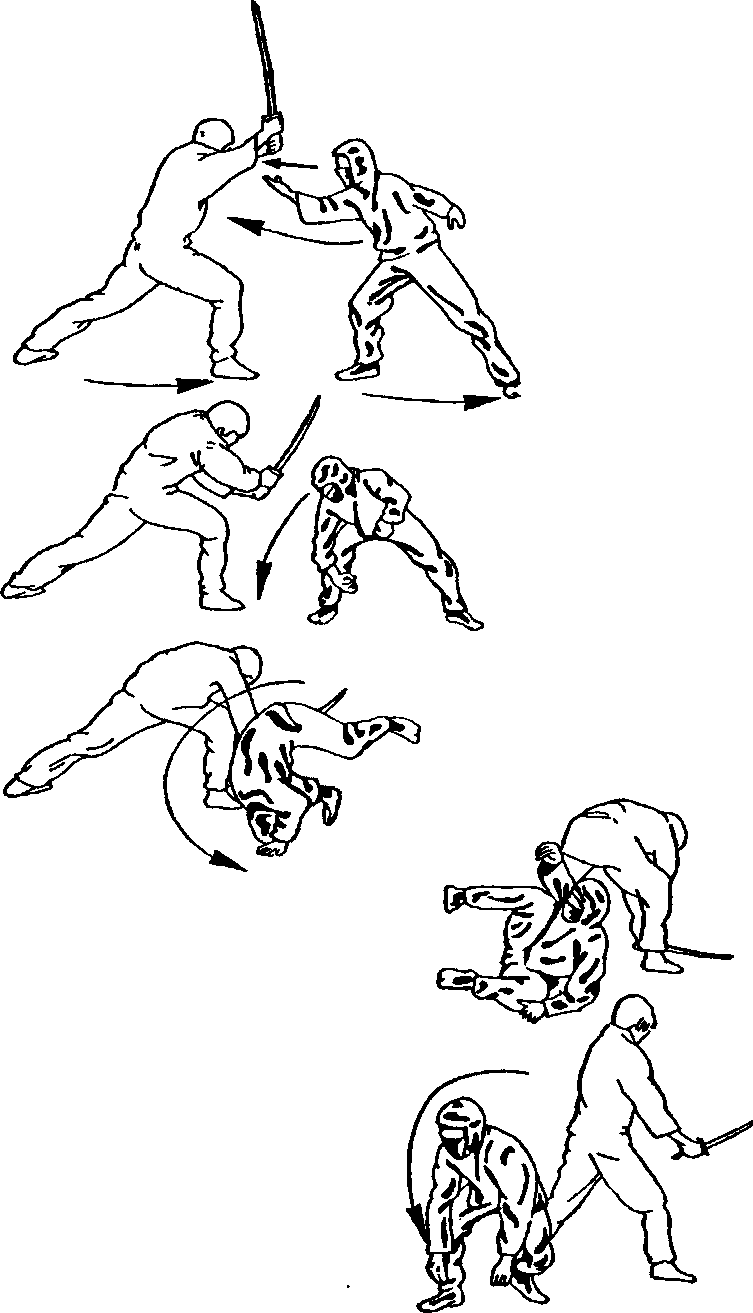
A different Westerner and member of a secret clan in medieval Japan. Therefore, it is better for the majority of contemporaries and compatriots not to waste time and effort trying to master the combat magic of shadow warriors. It should be understood that their destiny is less exotic, but more accessible and simple hand-to-hand combat systems.
The study of any technique in taijutsu can be divided into four stages.
The first is "getting used to the weapon". Just as a samurai, armed with a sword, draws it from its sheath, tastes the sharpness of the blade, weighs it in his hand, makes a few swings in the air, and then begins to cut the vine and straw targets, so the ninja must get used to any technique he learns, make it his own. . Mastering, for example, a punch, he first chooses the most convenient way for himself to form a fist, tries various trajectories of striking with it. The main goal of this stage is to achieve naturalness, looseness of movements.
The second stage is the "unification of movements". It is about combining specific strikes, grabs, throws with movements of the legs and the whole body. You need to learn how to properly distribute weight and apply force, while moving at different angles forward, backward, to the side, moving in a circle, rotating in one place. The main thing here is the unity of the execution of techniques.
The third is the stage of "practical use of the technique." A ninja learns to perform strikes, throws, knocking movements, slips in various positions, repelling various types of attacks, playing some situations in the forest, on the roof, in a narrow corridor, etc. Here you can only learn something together with a partner. The main goal is to understand the true meaning of the technique being studied, to bring its execution to automatism, regardless of the conditions of use.
Finally, the last step. It is called the stage of "absolute effectiveness of the reception." During it, it is required to
Master the technique to such a degree of perfection that it works intuitively, without the participation of consciousness, on “autopilot”. The connection of the energy of the body, the supernatural qualities of the psyche (if any) occurs at this stage.
A fight with a weapon in hand was built (and practiced) according to the same schemes. But, unlike his samurai opponents, the ninja avoided any restrictions in such a battle. He used everything that could bring victory. So, in parallel with the weapon, legs, distracting tricks, additional weapons (for example, a staff plus a throwing knife) and even hypnosis were used. In any case, the nature of the battle was determined by the characteristics of the situation and the enemy. No dogmas, no frozen ninja patterns were recognized.
Purely technical hand-to-hand combat of the ninja (taijutsu) included concentrated blows with the limbs on the most vulnerabilities the human body (daken-taijutsu), and bone-breaking grips, throws, painful effects (ju-taijutsu). The hand-to-hand combat technique also included a variety of slips (kawashi), falls (ukemi), somersaults with rolls (kaiten), wheels (daisyarin) and jumps (tobi). Dodges provoked enemies to attack past and open up, falls and jumps broke the rhythm of combat familiar to the swordsman, rolls and somersaults made it possible to suddenly disappear from the enemy’s field of vision, change the distance, and evade the attack.
hand-to-hand combat ninja has always been an improvisation based on a certain state of consciousness. However, he obeyed several important principles. The FIRST of them says: "Achieving maximum results with minimum means" (Ying-shin tonkei). It was he who determined all the strategic, tactical and technical features of the actions of shadow warriors.
With regard to hand-to-hand combat, this principle was expressed in the following idea: to win at all costs,
Choosing the most rational means to achieve victory. This means that it is necessary to make the most of various tricks and tricks, to attack the enemy as unexpectedly as possible, from behind or from the side, to prevent him from delivering a full blow. For example, to divert his attention for a moment with your scream, or to throw a handful of blinding powder in his face, a clod of earth, some object at hand. The fight is best fought in conditions of poor visibility - at night, in smoke, fog, a dark room, making the most of your ability to fight in just such an environment.
The best methods of defeat are those that work regardless of the mass and physical strength of the enemy. For example, blows to the throat, eyes, temple, groin, collarbones and spine, painful effects on fingers, hands, nose, genitals, etc. A fighter using one type of technical action (for example, only sword strikes or grips with throws and painful holds) should be opposed to tactics unusual for him - sharp departures from the attack line, kicks at the lower level, somersaults, throwing needles, stars, knives, stones ...
All of the above, taken together, led to the fact that the samurai, these constant enemies of the ninja, it was difficult to predict their manner of fighting. In turn, the uncertainty of the situation deprived the "bushi" of self-confidence, slowed down the reaction, reduced the speed and accuracy of the techniques. However, the principle of "in-shin tonkei" can be automatically implemented in all cases without exception only when it becomes the principle of all life: in work, in relationships with other people, in the practice of martial arts.
The SECOND most important principle is the preference for method (waza) over form (kata). If in “kata” the emphasis is on the correspondence of the movements being worked out to some given patterns, then in “waza” everything is determined by the effectiveness of certain movements in each
House specific case. During the learning process, the student is shown only general scheme various techniques, and the most convenient ways of their execution, working for him, not for a formal model (“only right”), he must find himself. This method is more time-consuming compared to the "kata", but the skills developed once are not lost over time. After all, they are based on the biomechanical capabilities of this person, and not a master who lived fifty or a hundred years ago.
Therefore, it cannot be argued that this or that technique is performed only in the way that the instructor shows. It all depends on the personal qualities and capabilities of the student. Taijutsu requires an independent search for the most rational, economical and effective ways to perform various techniques. This principle is revealed in the following four postulates: naturalness, fluidity, rhythm, distance.
The naturalness of movements (shizen) provides looseness, freedom, confidence in battle, the absence of excessive mental and muscular tension. In order to make combat techniques natural, a person needs to turn them into as familiar as, for example, moving a hand to the mouth with a piece of bread. This requires a huge number of repetitions of the studied techniques. Therefore, only by turning your whole life into continuous training, and the world- in your "dojo", you can achieve the true naturalness of your own actions. It should be recalled in this connection that the life of a boy, teenager, youth, adult male in any ninja clan was, in essence, such training.
The fluidity of movements (nogare) means a smooth transition from one technique to another, which forms a continuous chain of attacking and defensive actions without the slightest pause between them.
For example, a blocking movement turns into a hold, a hold into a throw, a throw is replaced by a blow, a blow - by strangulation or a fracture of the cervical vertebrae, etc.
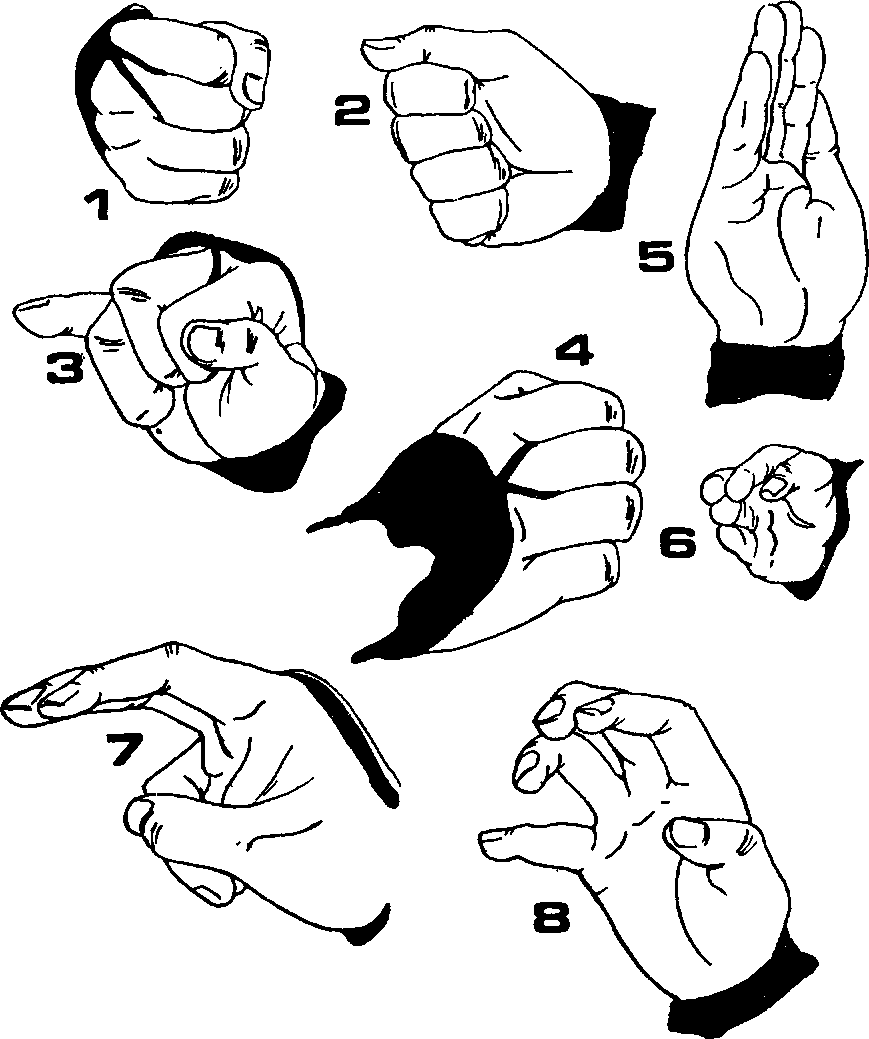
"Natural weapons" of the ninja: fist, fingers, palm
Duet try to be sure to complete each technique, regardless of changes in the situation of the battle. Here the enemy captured your hand. To release from the grip, you use the lever on his wrist outward. However, before you could carry out this technique, the enemy released you. And that's exactly what your goal was. It makes sense to immediately strike with the freed hand, and then act according to the situation. Ensuring fluidity in combat is possible due to the variety of mastered techniques, combined with mental and physical looseness.
The concept of rhythm (ritsudo) boils down to the fact that any duel represents an alternation of certain movements (those elements that make up techniques, movements, slips) with some frequency. A sense of rhythm allows you to win the initiative, since starting to act at a particular pace, a person retains it for some time, at least a second or two. By adjusting to the rhythm of the enemy, and then suddenly speeding up or slowing down your movements, you can “wedge” into his actions. Or simply impose your own rhythm on the enemy. It can also be said that the sense of rhythm determines the timeliness of the use of various techniques. For example, there is no need to dodge a blow that has not yet begun or put a block when the blow has already been carried out.
The requirement to “keep a distance” (ma-ai) is caused by the need to be at any moment of the battle where the enemy cannot reach you, or reach you with minimal damage. You should be able to attack him for sure. This requirement also means that you should not waste your strength by attacking from the wrong chosen distance, since the attack will inevitably “fall through” into the void or, even worse, expose you to a counter attack. Choosing the right distance is impossible without a good eye, the so-called "feeling of the enemy" and the ability to mix. All of these components are developed only by practice. No amount of meditation will help here.
The THIRD principle of taijutsu is formulated as follows: “The body and the weapon are one” (kentai-itiyo).
This statement has a slightly different meaning than another well-known thesis - "a weapon is an extension of the body." In ninjutsu, the emphasis is on the fact that the body itself is a weapon, while any mechanical device (weapon) serves only as an auxiliary means to enhance the damaging effect of body movements. He beats a ninja with a fist or brass knuckles, throws an asterisk or a knife, works with kyoketsu-shoge or with a staff, nothing changes from this. state of consciousness, basic principles, the nature of movements and slopes, the vectors of force application, energy consumption - everything remains unchanged.
The attitude to the body as a weapon is associated with the observance of several requirements. The first of them sounds like this: "hit from any position." Hand, foot, elbow, knee, finger start their journey from there and then, where and when it is required. No unnecessary movements such as swinging, bringing the fist to the hip, preliminary leg extension, twisting of the body, etc.
The second requirement is that in a real mortal combat there is no place for outwardly impressive but actually harmless movements. Any strike must go to a specific point of defeat, and not to an abstract "middle" or "upper" level. In addition, each blow must be applied with a minimal impact surface (finger, one of the faces of a clenched fist, elbow, foot edge), which provides a powerful destructive wave inside the body.
The next requirement is to abandon the rigid fixation of the feet, hips and shoulders. For example, a strike with the fist (or the base of the palm) must occur a fraction of a second earlier before the foot moving at that moment is firmly on the ground. The result is a connection kinetic energy body, legs and striking arm in a single vector of force directed forward a few more moments after contact with the target. If you sharply remove the beau-
By pressing your arm (or leg), you will create a powerful shock wave that will cause serious internal damage.
Another requirement was called "block and strike are one" (uke-kime-itiyo). It implies that the parry and the counter-strike must merge into one action. No isolated rigid blocks like karate "age-uke" and "gedan-barai". A block in taijutsu is actually a blocking blow to a point located on the attacking limb of the opponent. And in many cases, also the continuation of one's oncoming movement until it touches the opponent's body or head...
Ninjas are mysterious ghosts that lurk in the shadows. They are able to sneak into the most protected stronghold to inflict death blow enemy. The skills of these elusive mercenaries instilled fear and awe in people, giving them the image of terrifying demons of the night. Today, everyone knows about silent killers - children play ninjas, hundreds of films are made about them, animated works are created. The image of a man in dark clothes, throwing shurikens and running along the walls, firmly sat down in public consciousness. Therefore, today it is difficult to say what the ninja really were, what is true, and what is just a beautiful story.
The world owes the appearance of the first ninja to hermit monks who lived in the mountains. They professed the Shingon branch of Buddhism and called themselves Yamabushi. These people possessed exceptional knowledge about man and nature. They were masters of herbal medicine and making poisons, they could both heal diseases and kill. Yamabushi were also experts in acupuncture and possessed abilities that far exceeded those of an ordinary person.
Yamabushi tempered themselves with grueling workouts, as they believed that the body is an excellent tool for educating the spirit. The peasants loved and respected these mysterious hermits, as they could heal diseases of people and animals, save crops and, as legend has it, even controlled the weather. Yamabushi's knowledge in the natural sciences was significantly ahead of its time - they were well versed in astronomy, chemistry, botany, medicine, which only strengthened faith in their superhuman abilities.
Over time, the merciless training of the hermits began to bear fruit - they learned how to masterfully control their body and mind. Yamabushi could consciously control not only their breathing, but also their pulse. The settlements of the monks began to attract people who did not find a place in society. Among them were also ronin, who skillfully wielded a sword and other weapons. They contributed to the practices that the hermits did.
The fact that these people lived in the wild made them masters of disguise, and also gave them the ability to wait. Indeed, in the mountains there was no haste and fuss, so common to the rest of the world. This endowed the predecessors of the ninja with unlimited patience and character traits that were inaccessible to the average layman. They could confidently survive in the wild and instantly hide in the natural landscape. Such outstanding achievements have attracted the powers that be to Yamabushi, who want to use their unique skills for their own purposes.
What did the legendary shadow warriors do? Often, their activities were much more prosaic than shown in films and books. Ninja techniques allowed them to play any role. It was almost impossible to meet one of them in classic black clothes that hide their face. The ninja has always adapted to the environment in which he had to work. If he was in the company of samurai, then he behaved like a samurai and was dressed accordingly. Among peasants and beggars, he was dressed in rags. The acting of such a scout was so skillful that it could deceive even the most cunning enemy. Often the work of a ninja was carried out so quietly and smoothly that it was impossible to even know that he was there. 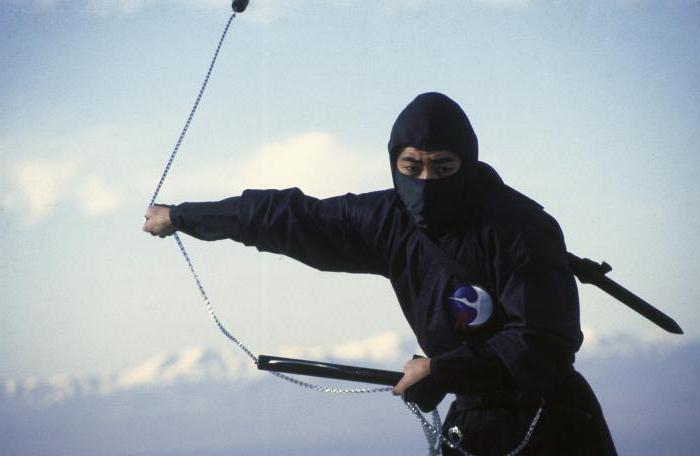
Contrary to stereotypical opinion, these geniuses of disguise rarely participated in contract killings. They were mainly engaged in reconnaissance, secret information extraction and sabotage in the enemy camp. That is, the ninja were an analogue of James Bond, and not ruthless assassins, although, apparently, they were also attracted to such activities, since they perfectly mastered the techniques of hand-to-hand combat.
To be a skilled mercenary, a ninja had to rebuild his entire life. Therefore, they did not occupy a certain place in the Japanese hierarchy, but were outside it. In the ranks of the ninja, one could meet representatives of any class. Movies often show the confrontation between samurai and scouts dressed in dark clothes. But in fact, the main customers of the ninja were the samurai, who constantly fought among themselves. Moreover, if one of them went bankrupt, then he often moved to one of the ninja clans, where samurai combat techniques came in very handy.
Met in such clans and commoners. At the same time, there is no evidence that they stood up for the peasants and protected them from the samurai. Most likely, these are just beautiful legends that romanticize the image of a ninja. It is important to understand that the warriors of the night were mercenaries and did any work for which they were willing to pay. That is, the decisive factor in the life of their clans was money, not moral values and beliefs. Whoever pays the most, they will help. Therefore, ninja techniques were aimed more at espionage and the extraction of secret information than at eliminating the enemy.
It is believed that the ninja clans finally formed around the 10th century AD. In those days, nobles used their services to resolve their conflicts. The ninja's secret moves were perfect for gaining an advantage in power struggles. Shinobi services were especially popular during the unification of Japan. This happened around 1460-1600. Then all parties to the conflict used the services of ninja to get at least some advantage in this monstrous war. 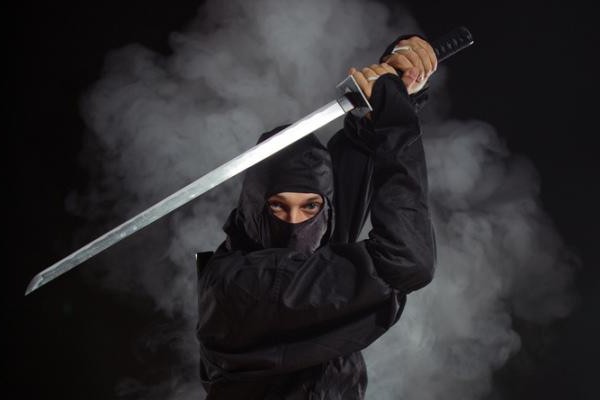
However, in later years the Tokugawa shogun decided it was too dangerous to leave the freedom-loving clans. Moreover, since the ninja were mercenaries who served the one who pays well, their services could be used against him, which was not at all part of the ambitious shogun's plans. As a result, he played off the two largest clans - Iga and Koga. The bloody confrontation between them ended with the fact that most of the ninja were destroyed. The survivors were weak and scattered, which forced them to swear allegiance to the Tokugawa.
Movies often show how hordes of ninjas storm a fortress or cut down with samurai. However, it was illogical for the warriors of the night to engage in direct confrontation. Ninja fighting techniques were designed to quietly eliminate the target or keep guerrilla war, but certainly not to confront the enemy in an open field. Of course, a direct collision left no chance for the mysterious saboteurs. But they were competent strategists and did not allow the conduct of war according to the rules of the enemy. But their help could have a decisive influence on the outcome of the war, since a ninja who penetrated the enemy’s fortress could make a lot of noise, sabotage and demoralize the enemy. 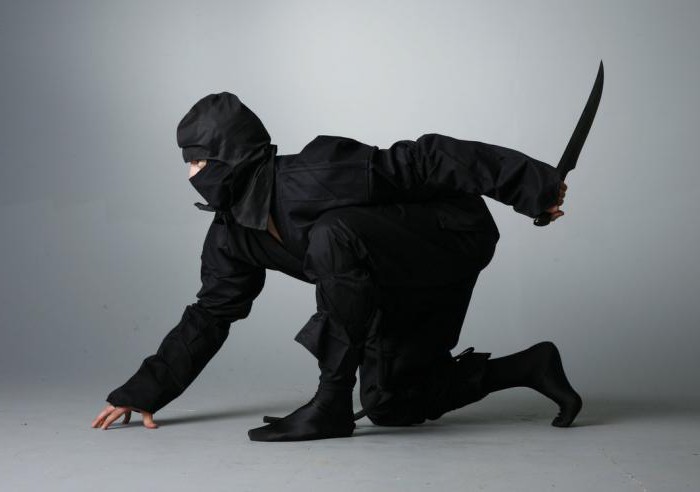
Masters of disguise could penetrate the camp of the enemy as Peaceful time as well as during large-scale hostilities. Their goal was military leaders or strategic objects. Also, the information that these fearless scouts obtained could give their employer a decisive advantage, turn the tide of the war.
Today, like mushrooms after rain, all sorts of schools for teaching the art of night warriors have popped up. In them, fans of ninja films pose as skilled assassins and scouts. However, these people, for the most part, invent ninjutsu techniques in order to get money from gullible students. In general, it is difficult to say that the art of shinobi was as structured and understandable as, for example, karate or judo. There is no evidence that they all used any one technique to achieve their goals. Rather, they were general principles and methods of survival in extreme conditions.
The training of the ninja resembled the training of a special forces fighter, and not the martial arts of Japan. But there are still thousands of enthusiasts throwing shurikens and performing elaborate acrobatics in stylized black suits. An entire industry has grown up around this occupation. Anyone who is determined to become a modern ninja can go to the store and buy himself a suit, shuriken and all kinds of chains. By going online, you can easily purchase a "ninja sword" and become the coolest in the area. How did the training of the warriors of the night really take place?
Over time, the ninja clans became well-structured and fully formed structures. It was almost impossible for a stranger to get into such a clan. Knowledge was passed from father to son and carefully protected from prying eyes. The scrolls with ninjutsu techniques were especially jealously kept, the training of an outsider was punishable by death. Each clan specialized in special techniques peculiar only to it. Some of them were specialists in sabotage, some preferred poisons, and some were fed by insidious ambushes. 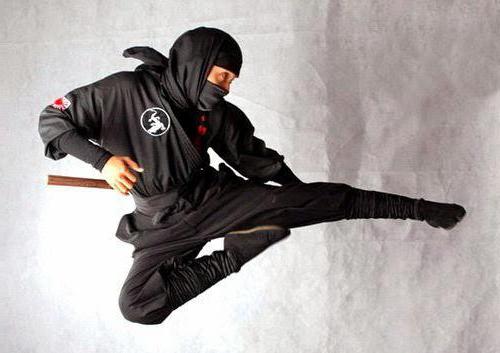
There was a clear hierarchy within the shinobi clans. The top was engaged in the conclusion of agreements, the signing of contracts, entry into unions and exit from them. There was also a middle layer, the purpose of which was to control the execution of orders from above. At the bottom rung of the hierarchical ladder were ordinary performers. That is, the ninja clans were serious organizations with severe discipline and a pronounced hierarchy.
The black suits familiar to us, by which everyone can recognize a ninja, are more a product of cinema than a reflection of the real state of affairs. Black is not the best color for camouflage, as it is extremely rare in nature. Therefore, different shades of brown and gray were most often used. It was they who allowed me to merge with the outside world most fully. The notorious ninja sword was also not the weapon of choice for elusive infiltrators. They preferred chains, plows, retractable spears, shurikens and other tools that were easy to hide or pass off as tools of peasant labor. 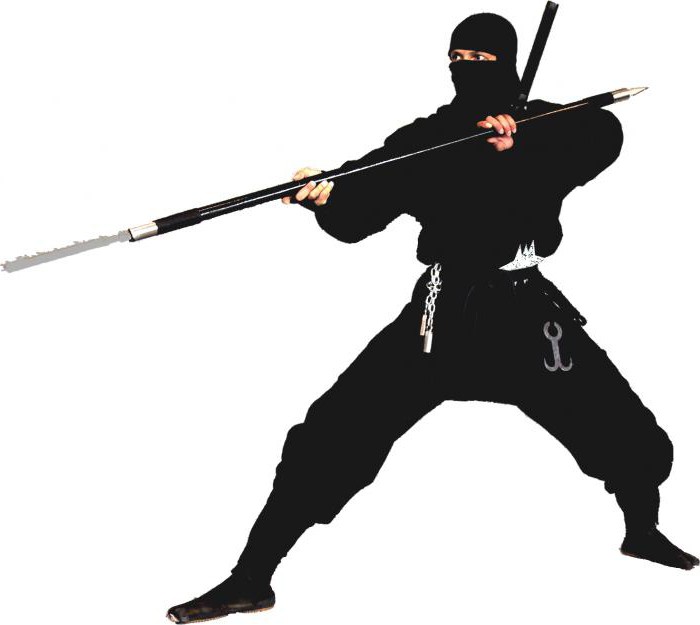
Shinobi was used infrequently, since in most cases the warriors of the night disguised themselves as the environment, in order to make it as simple and simple as possible. effective way get to the target. There were many pockets in which medicinal herbs, poisons, needles and shurikens were placed, as well as other weapons of warfare.
In the arsenal of the ninja were not only hand-to-hand combat techniques and edged weapons. They also skillfully used hooks, ladders, ropes and other things with which one could get into the palace chambers or overcome the fortress wall. More shinobi knew a lot about using explosives, which helped to sow panic in the camp of the enemy or make a hole in the wall. Ninja shoes were also adapted to their tasks.
Often they carried special breathing tubes with them. Ninja techniques allowed them to stay under water for a long time, breathing through a thin tube. But the most powerful weapon of these treacherous scouts was their knowledge of psychology. They could play any social role, ingratiate themselves with the right person. Ninja were able to control their own minds, which allowed them to survive the most difficult trials without experiencing discomfort.
No matter how hard the ninja tried to refrain from direct participation in the war, they did not succeed. Nobunaga Oda, a tough military leader who wanted to unite the country, managed to destroy the Iga clan, the strongest shinobi organization. He left no stone unturned in the area where this powerful clan and as a result of a fierce confrontation, he managed to defeat his enemies. The surviving members of the clan dispersed throughout the country. However, this victory was not easy for the brave samurai. Many thousands of soldiers died at the hands of the ninja. 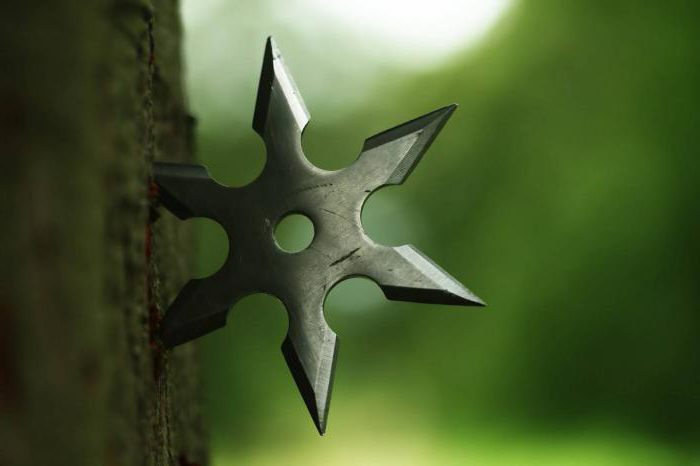
Modern ninja hardly learn martial arts. They don't run up walls or throw needles. Intelligence agencies have significantly changed their methods of work over the past century. Of course, the training methods used by the ancient scouts are still relevant today. For example, in special units who need to be able to survive in wild nature and fight in the forest. But the videos titled "Ninja Techniques for Beginners" or the various "Ninjutsu for Dummies" manuals are just a smart commercial ploy and have nothing to do with the mysterious warriors of the night. However, shinobi and their unique life path are valuable. cultural heritage, which should not be lost.
After the Second World War, interest in oriental martial arts increased significantly, but it is the art of the ninja that is rightfully considered the oldest and most mysterious. Despite the mystery that shrouded him, the number of people who want to master this art is constantly increasing. But this task is not as simple as it seems, because it requires a steel will, iron endurance and a willingness to work on oneself.
To learn the art of being a ninja, you will need a training plan, schedule, instructions, knives, sharpeners, or any other handy items to improve your skills.
The art of the ninja is hidden secret knowledge. This is self-mastery, self-understanding, knowledge about man and the world. You can learn the art of ninja. To do this, you need to be confident in yourself and be ready for anything to achieve your goal, and this goal must necessarily be good, because for good purposes it is allowed to use unwholesome methods to achieve them. Actions shape a person. Much is said about this in Buddhism. You need to be careful with this, because for every action you have to pay. This is called karma.
Where to start learning the wisdom of the ninja is difficult to say because the teaching is secret. Ninjutsu is not limited to physical training alone, it affects all areas of knowledge: philosophy, esotericism, etc. including even the psychology and etymology of man and animals. All this is included in the training.
Become a ninja at home, take part-time or online training in the art of stealth, get a certificate of mastery or a black belt in ninjutsu, just learn how to become a ninja - there are an incredible number of people who want this. Someone is attracted by the romantic style of lonely outcasts, someone is attracted by unprecedented superpowers - there are a lot of options, but each of these dreamers, quite understandably, just wants to become at least a little stronger.
Be that as it may, if there really is a desire to realize a dream, touching the true art of shinobi is possible only with a real teacher, practicing tirelessly every day, at any time of the day.
But it should be remembered that even studying in official schools ninpo taijutsu. not everyone can consciously approach the heights of art, because, on the one hand, this requires continuous hard work on oneself, and on the other hand, there are too many versions of what is the true essence of ninjutsu, as well as both external and internal factors involved in this definition.
And yet, developing comprehensively, training the mind, body and spirit, any person can partly bring himself closer to the warriors of the night. And by publishing the materials in this section, we hope that they will help everyone who wants to make themselves wiser, stronger and better, and, like the ninja of the past, win the most important victory in their lives - the victory over themselves.
The main thing in martial art is not victory, but survival. This book will help you master the most important life-saving budo techniques. The ninja was the one who expressed the very spirit of budo by their existence. The basis of ninjutsu is the ability to adapt to the surrounding world, the identification of a person's potential, and most importantly, the survival of a human warrior in extraordinary conditions. The book will tell about the history of ninja, about the variety of ninjutsu and about the system of training warriors in ninjutsu.
In Japanese literature on ninjutsu, the theory of the creation of this martial art by mountain hermits, who were called Yamabushi, following the teachings of Shugendo originating in the distant 710-784, has become widespread.
The core of Shugendo was the ancient path of the gods, which was national religion Japan, which was based on the ancient cults of their ancestors.
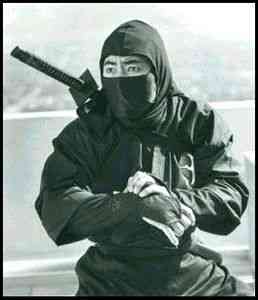
Ninja training is the most difficult process of learning the art called "ninjutsu". All actions require a certain level of skill and, accordingly, must be under the constant supervision of mentors. The slightest mistake or relaxation can lead to irreparable consequences.
It just so happened that ninjas are trained, as a rule, literally from the cradle: babies are subjected to grueling tests that form a stable personality, both physically and psychologically. But this does not mean at all that those who miss the time will never be able to succeed. A strong desire and motivation will help almost anyone with the right health along the way.
Long training and practicing technique is the key to the success of everyone who wants to comprehend the essence of the doctrine. Ninja training does not tolerate haste. The process of studying this ancient art includes not only the improvement of physical condition, but also the knowledge of the ideology of the ninja. Training can take place in different conditions: on high ground, in places of alleged ambush and even in the water. Environment is key point- the harder it is to be tolerated by students, the more hardening the body acquires. This habit of hard conditions is developed at the very beginning of training.
We must not forget that ninja fighters are, first of all, excellent specialists in the field of espionage and intelligence, which means that the student must be prepared for the fact that some life concepts will have to be neglected: “eavesdropping” and all kinds of ways of obtaining information are not what something alien.
Everyone who is ready to start training ninja right now can only wish one thing - great patience and perseverance, never give up your good intentions!
Sources: www.bolshoyvopros.ru, mitsumono.ru, rutracker.org, ninja2.my1.ru, otvet.mail.ru
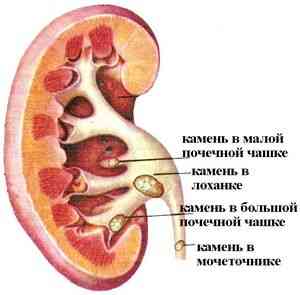
Acid - alkaline balance in human body shifts. Insufficient water intake, consumption of meat, fish products in exorbitant quantities, consumption of...

Later Moscow legends well remembered the ancient Moscow owner, the boyar Stefan Ivanovich Kuchka, who owned Moscow before Yuri Dolgoruky, ...

When planning long trip, you must not only carefully prepare yourself, but also do the same with your car. ...

Cenote Ik-Kil can be called one of the famous natural pools of the world. It is located in Mexico on the Yucatan Peninsula. The cenote was formed as a result of...

The ancient Greek historian Herodotus, describing the pyramids of Giza, cited information that 100,000 slaves were involved in the construction of the Cheops pyramid. It was also stated...
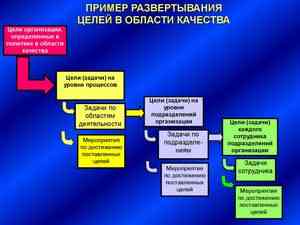
Each company sets goals and develops strategies for how to achieve them faster and more efficiently. The most important goal is usually called ...

The history of the Japanese jewelry brand Mikimoto is one of the most interesting and extraordinary compared to other brands. She started...